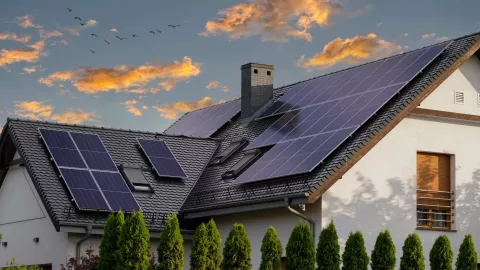
The greener we are the more flexible we need to be. Flexibility and energy storage will be the key enablers for the massive integration of wind and solar power… which we desperately need to implement the energy transition towards a decarbonized world.
Electricity is quite a special product. To have a balanced electricity system we must at all times equal supply and demand, otherwise the system will face frequency imbalances that in the most severe scenarios can lead to blackouts. Being a critical “fuel” for our society (electricity, I mean), we must minimize said imbalances and make a Herculean effort to match generation and consumption – the next day… the next millisecond.
This characteristic determines, for example, and contrary to other products, that we cannot build stocks of electricity that we can use whenever needed. Every time we need it, we must produce it.
Energy storage mitigates this effect, but it does not scratch the above-mentioned principle. When we say that we store energy in a battery or through the production of Green Hydrogen, we are basically using (excess) electricity to power an electro-chemical process and thus store chemical energy on the battery (which can be later discharged again in the form of electricity, when needed) or produce Green H2 molecules (that can be later used in industrial processes or converted back to electricity through a fuel cell). When we talk about Pumped Hydro Energy Storage, we basically use (again, excess) electricity, convert it to mechanical energy and pump water upstream, storing it in the form of potential energy – to be later used, when needed, running through the hydro turbines, and producing electricity.
Flexibility is quite a recent buzzword, but it has been a steppingstone of electricity systems since immemorial times.
Even if we have the sharpest “crystal ball” it is impossible to estimate the exact amount of electricity that will be consumed in each instant. That is why we always had flexibility mechanisms (usually called flexibility services) to be able to provide the necessary balance to the system. Historically we had controllable / dispatchable power generation units – hydro and thermal, that provided the referred flexibility services, acting swiftly to match supply and demand within a few milliseconds (typically controlled by a centralized entity which had visibility on consumption and control over generation), not allowing for the frequency to go too high or too low.
As we introduce more and more variable renewables into our electricity system, the greater and more frequent these mismatches between supply and demand – if in the past it was difficult to predict consumption, now it is also difficult to predict generation (sun shines or not, wind blows or not)… with additional impacts (more localized) on the way we explore electricity grids, namely controlling its capacity and voltage levels.
One driver is to enhance the way we estimate generation and consumption (will AI be a key lever here? Guess so…) and design markets that can respond fast, providing the right incentives but also implementing the real data infrastructure that allows for the fast settlement between supply and demand. But we cannot imagine a RES-driven world without energy storage. Be it high power / few seconds applications to absorb fast surges, be it batteries to manage within the day, be it longer duration energy storage (PHES, Compressed Air, Power-to-gas…) to accommodate for seasonal imbalances… all will provide a valuable contribution. Ah, and let us not forget the control over the demand side – which can be seen as negative generation, to be used in an aggregated way, providing support to the system – again with correct incentive schemes and regulation in place.
Flexibility and energy storage are of the essence when it comes to manage a system driven by wind and solar power. Let us accelerate development and testing of new solutions, let us explore alternative materials (to speed up competitiveness and remove supply chain bottlenecks), let’s invest and let’s accelerate even further the adaptation of existing regulatory models.



